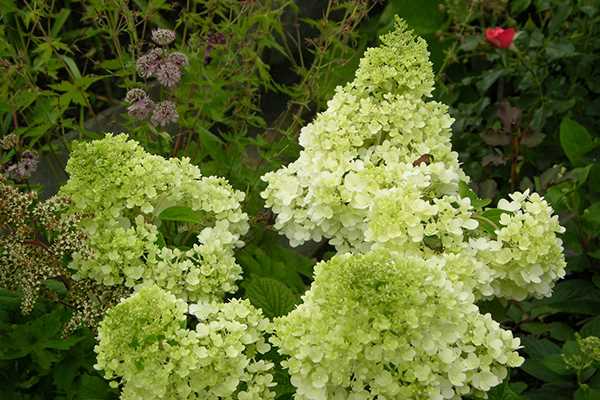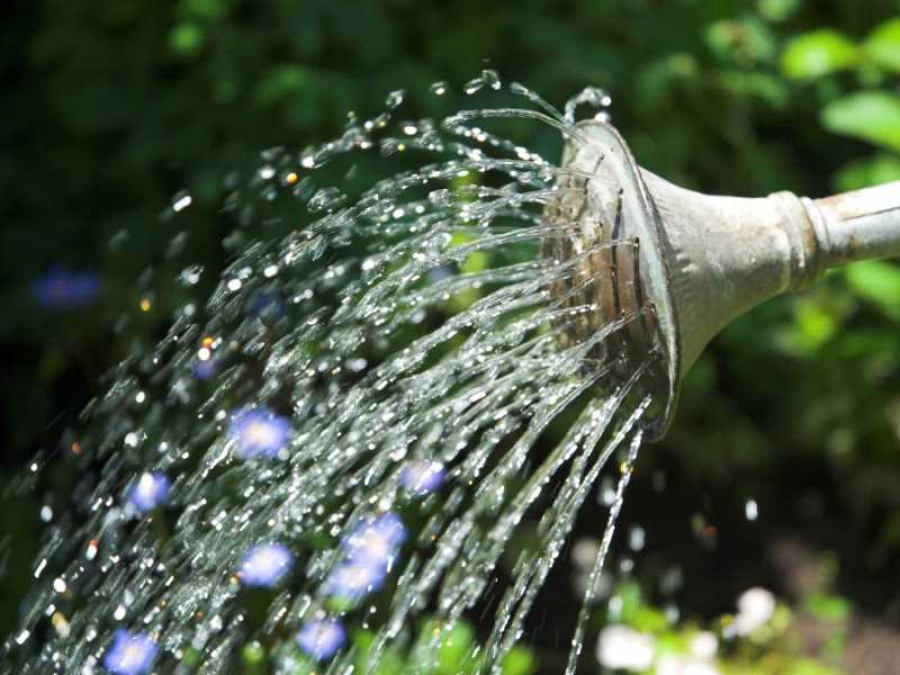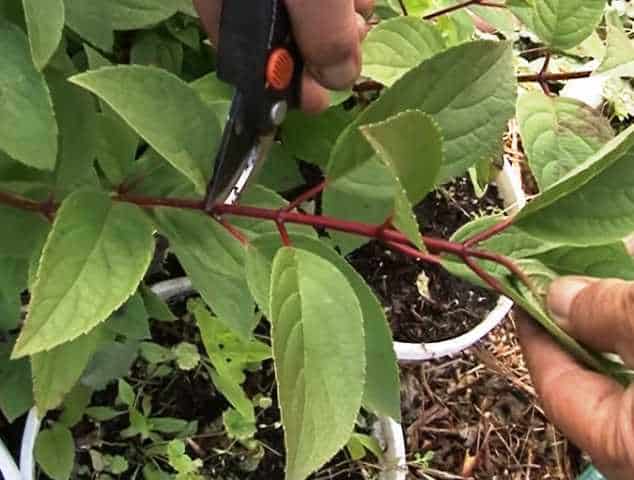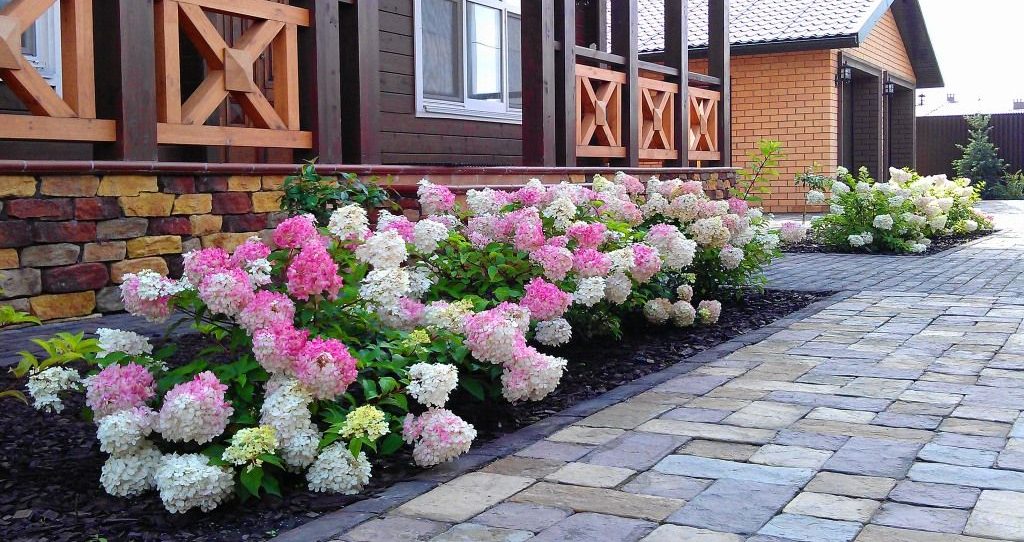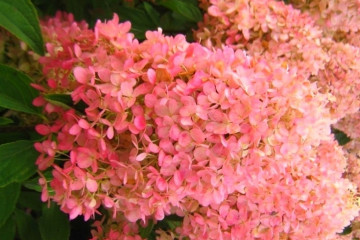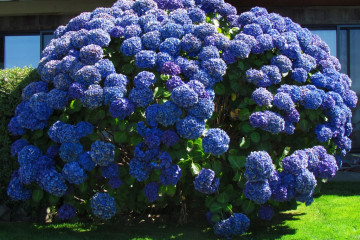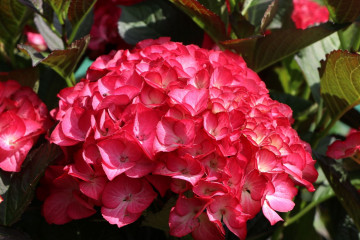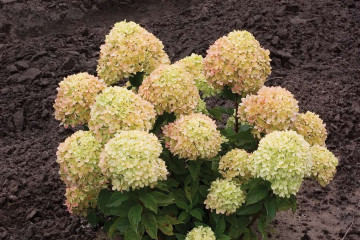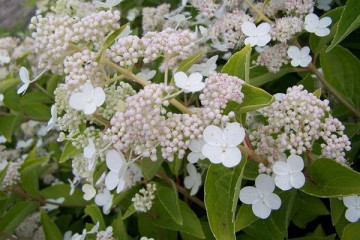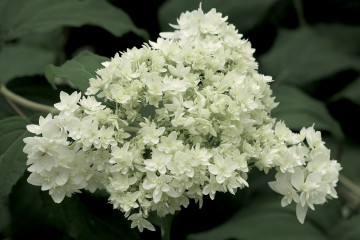Hydrangea Magic Moonlight - description, planting and care
Content:
Hydrangea Magic Moonlight is very popular with gardeners. This culture is often used in landscaping and is able to withstand even harsh climatic conditions. To succeed in growing this plant, you need to properly plant, and then provide it with quality care. A detailed description of all procedures is given below.
Description of the hydrangea variety Magic Moonlight and its characteristics
Hydrangea Moonlight is a beautiful crop adorned with lush flowers. Due to this, it is often used to decorate flower beds and create hedges.
History of origin
The plant got its name due to the similarity of blossoming inflorescences with moonlight. This is a fairly large shrub that has excellent decorative properties and a long flowering period.
Features of the variety
Panicle hydrangea Magical Moonlight is a straight shrub that is characterized by rapid development and is capable of reaching a height of 2 m. It can also be formed in the form of a small tree up to 3 m in size. The plant is characterized by strong shoots that grow vertically and a dense spherical crown.
The branches are adorned with tough, ovoid leaves. They are characterized by a rough texture and veined. During flowering, which lasts from July to October, large inflorescences 20-40 cm in size appear on the bushes. At the initial stage of development, they have a rounded shape, and then become elongated.
The brushes are quite voluminous and contain many densely spaced flowers. Their shade depends on the period. Initially, the inflorescences are lemon-green in color. By the fall, they become snow-white. The formation of flowers occurs on young branches of the current year.
Winter hardiness
The undoubted advantage of the culture is its high resistance to frost.
The description of the plant says that it is able to withstand temperatures as low as -29 degrees. An adult Magic Moonlight hydrangea bush can survive the winter without shelter.
Planting and further care of the Magic Moonlight hydrangea
In order for the Moonlight panicle hydrangea to grow well and bloom magnificently, it is important to competently carry out planting work.
Site selection and preparation
When choosing a place, you should not give preference to an open sunny area. If you plant the plant in the shade, its color will remain greenish. In this case, the shade of the flowers will practically not change. Therefore, the bushes should be planted in partial shade. It is important that this location has the same periods of light and shade. And the site must also be protected from wind gusts.
Loose and slightly acidic soil is suitable for planting a culture. It is desirable that it is moist enough. For planting work, it is recommended to use three-year-old seedlings.
How to plant hydrangea
Planting work is recommended in spring or autumn. In this case, spring planting is considered more preferable. In this case, the culture adapts much faster to new conditions. A month before planting, the soil must be dug up and fed with compost.
The size of the pits depends on the development of the roots. It is important that they fit completely into the groove and do not curl. If you plan to plant several bushes, it is worth observing an interval of 2 m.Otherwise, there is a risk of oppression of their development. If you plan to create a hedge, the gap should be 1 m.
When planting, the seedling must be installed in a recess, spread the roots and sprinkle it with earth. Then the soil should be well tamped and watered. 1 plant requires 10-12 liters of water. Finally, the trunk circle should be covered with a mulch layer. Peat is best suited for this purpose. The thickness of the mulch should be approximately 7 cm.
Watering and feeding
During the first month after planting, the crop should be watered every day. Then the number of waterings should be reduced. The frequency of the procedures depends on the characteristics of the soil. It is important to ensure that the top layer is not dry. If mulching is not carried out, the soil must be loosened to a depth of at least 5 cm.
Feed the hydrangea twice:
- In the spring, fertilizers help to intensify the growing season. At this stage, it is worth adding a urea solution. To do this, you need to take 20 g of the product per 10 liters of water. Pour 1 bucket of fertilizer under a young bush. An adult culture will require 2 buckets. You need to fertilize the plant at the stage of bud formation.
- In summer, top dressing helps to improve the flowering of the hydrangea. In this case, a composition based on potassium sulfate, urea and superphosphate should be used. All ingredients must be taken in equal parts - 30 g each. The mixture must be mixed with a bucket of water and poured under a hydrangea bush.
Pruning
To maintain the excellent decorative properties of the crop, it requires high-quality pruning. This treatment ensures lush blooms, helps to increase the number of flowers and prevents fungal infections.
Sanitary pruning is carried out in early spring. During the procedure, you should get rid of dry and old branches. The shaping procedure is performed in 2 stages:
- in the fall, the bush needs to be cleaned of inflorescences, weakened and diseased branches;
- in the spring, before flowering, you need to thin out the bush by cutting off shoots that are directed inward or broken after winter.
Preparing for winter
If the hydrangea grows in the southern region, you do not need to cover it for the winter. When cultivating a plant in a harsher climate, it is worth insulating it. You need to prepare the bush for winter in several successive stages:
- In the fall, the bush should be watered abundantly and the trunk circle should be covered with mulch.
- A few days before the expected frost, shoots should be wrapped in burlap or other material. It must be breathable.
- At a height of 30 cm, it is worth making a frame. It needs to be made of mesh.
- The space between the insulation and the mesh must be filled with dry foliage.
- It is recommended to place the film on top. This shelter provides reliable protection from frost and ice.
Reproduction
Hydrangea needs to be propagated by seeds or vegetatively. At the same time, the seed method is practically not used for breeding varietal varieties of bushes. Its main purpose is to obtain new varieties.
Therefore, at home, flower growers propagate hydrangea by vegetative methods. The easiest and fastest way is grafting.
- In early May, you need to cut cuttings 10-15 cm in size. They must contain at least 2 buds.
- Then you need to make a nutritious substrate based on sand and peat.
- The planting material must be moistened in Kornevin and placed in the substrate.
- Next, the containers are best moved to a cool and shaded place.
The first roots are formed after 20 days. After that, the culture can be planted in a permanent place.
It is also permissible to propagate hydrangea by layering. To do this, you need to take a long shoot, bend it to the ground, fix it and sprinkle it with soil. Roots will form at the end of the season. At this stage, the daughter plant must be separated from the mother and transplanted.
In this case, the most affordable way is to divide the bush. To do this, in spring or autumn, the bush must be dug up and cut into several fragments. Each piece must contain a minimum of 3 buds.
Diseases, pests and means of combating them
Sometimes the plant is faced with the development of gray mold. In this case, the branches are covered with brown spots. With high humidity, they turn gray. To cope with the pathology, you need to remove the affected fragments and spray the entire hydrangea with fungicides.
Powdery mildew can be another problem. Pathology is accompanied by the appearance of white bloom on foliage and shoots. Removing branches and leaves will help to cope with the disease. It is also necessary to use fungicides.
Use in landscape design
The plant is often used to decorate garden plots. You can make a hedge or flower bed from it. Also hydrangea is great for single plantings.
The undoubted advantage of the plant is its ability to change the color of the buds. By autumn, most flowers acquire a pinkish tint and the hydrangea bush looks very impressive.
Magical Moonlight hydrangea is a beautiful culture that is often used to decorate summer cottages. In order for a plant to bloom luxuriantly and profusely, it needs to be provided with full and high-quality care. It includes timely watering, fertilization, pruning. Protection of bushes from diseases and parasites is of great importance.
